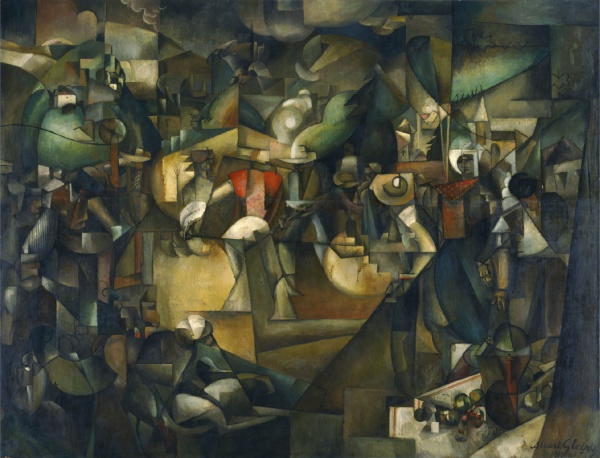Facts About Harvest Threshing
"Le Dépiquage des Moissons" or "Harvest Threshing" is an exceptional oil painting from 1912 by the French artist Albert Gleizes. First unveiled at the Salon de la Section d'Or in Galerie La Boétie, Paris, in October 1912, this work, alongside Robert Delaunay's "La Ville de Paris" is regarded as one of the most ambitious Cubist creations before World War I. Initially part of the Solomon R. Guggenheim Museum collection in New York, it now resides at the National Museum of Western Art in Tokyo, Japan.
The painting masterfully captures the essence of nature, humanity, and the harvest, featuring elements such as mountains, valleys, workers, and wheat. Gleizes' work is notable for its grand themes, including the harvest, the hunt, and urban scenes like "Broadway" and "Brooklyn Bridge." The intricate composition, with its blend of straight lines and curves, reflects the Cubist principles Gleizes articulated.
Influences from artists like Georges Seurat and Paul Cézanne are evident in the painting's background, which melds traditional and modern elements. Gleizes aimed to synthesize reality through his own perception, focusing on the relationships between volumes and colors. Unlike Picasso and Braque, who often depicted everyday objects, Gleizes chose broader, more complex subjects, pushing the boundaries of Cubism.
Gleizes co-authored "Du 'Cubisme'" with Jean Metzinger, a pivotal essay that defended Cubism and modern art. This publication significantly influenced the artistic discourse of the time and helped establish Cubism as a major movement. Gleizes' artistic vision, marked by grand themes and innovative compositions, distinguished him from his peers.
The painting's journey includes ownership by Solomon R. Guggenheim and its transition through various galleries and private collections before settling in Tokyo. "Harvest Threshing" has been featured in several important exhibitions, underscoring its significance in the Cubist canon and its enduring impact on the art world.
